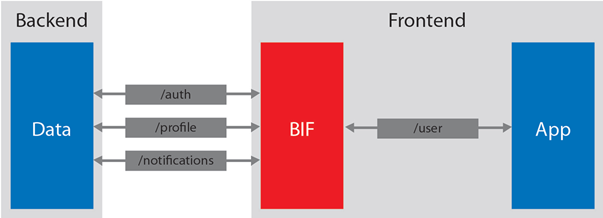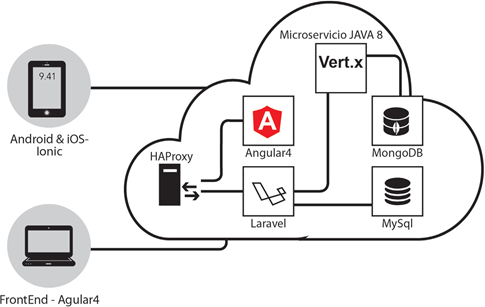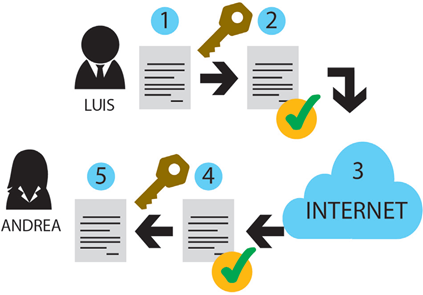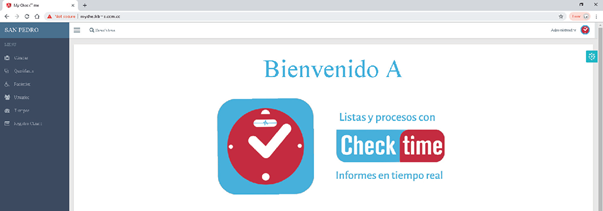Introduction
Patient safety has always been a relevant consideration in anesthesiology. According to the Institute of Medicine, safety along with patient-centered care and effectiveness are the main dimensions of quality of care.1 In this sense, the impact of checklists on patient safety has been the most successful pillar in reducing adverse events over the last 10 years, as a result of the campaign led by the World Health Organization (WHO).2,3
Since the mid-20th century the manufacturing industry has been the basis for a significant number of successful experiences in medical practice by implementing industrial methodologies, with increased standards of safety and quality delivered in regular medical care. An example of this is the implementation of Toyota's Lean methodology,4 which has been considered as a guide for continuous improvement of current medical practice, favoring the safe and qualified development of health services delivered, even in areas as sensitive as operating rooms.
Toyota's Lean Methodology is based on the principle of delivering improved quality of care, optimizing resources in order to ensure better quality with less resources.
Some of the core principles in the implementation of the Lean Methodology include:4
Identifying the customer's value (quality control): The basis of this philosophy is that all departments, employees, suppliers, distributors, and people involved with the process must actively participate in quality control, defined as the degree of satisfaction with the service received.
Kaizen (continuous improvement): Uses perception (identify problems), develops ideas (finds creative solutions) and makes decisions which involve implementing such decisions and checking for outcomes.
Lean Six Sigma: Lean Sigma is a combination between the Lean methodology and Six Sigma elements designed to reduce defects before they actually occur.
Pull System: This system refers to providing care avoiding unnecessary interruptions (make flow).
Just-in-time: Adapting care delivery to the demand rate, reducing time from demand to delivery of care. The objective is to control the time for delivering care.
Functionally speaking, the Lean Methodology groups concepts into different bundles. The term "bundle" is used to capture categories of interrelated and internally consistent practices. The following Lean practice bundles are used in this document, based on the literature reviewed and the opinion of experts:5
(1) Waste elimination practice bundle.
(2) Quality practice bundle.
(3) Low cost practice bundle.
(4) Human Resource Management Practice bundle.
(5) Health and safety practice bundle.
(6) Creativity and innovation practice bundle.
The implementation of best practice bundles based on the Lean methodology is one of the ways of grouping elements or interventions that have a favorable impact on outcomes, minimizing all those redundant elements or interventions that are interpreted as incapable of generating value in the activity developed.4
Following is an analysis of the current evidence on patient safety, describing the development of a technological package that the authors have called MyCheckTime® (SEGANEST. S.A.S. Cali, Colombia). Its objective is to record the actual times of the patient's circuit in the surgery area and implement digital checklists-similar to the administration of recovery scales-which is essential information to identify any critical points that offer opportunities for improvement, as well as bottle necks, and suggest changes in the efficiency of medical practice. Checklists,6-8 safety packages,9-11 and Toyota's Lean Methodology,5,12,13 were the conceptual pillars for the development of the software.
Materials and methods
Design and development: MyCheckTime ® : the safety bundle!
For 3 years, a multidisciplinary team of anesthesiologists, engineers, and statisticians, developed the MyCheckTime® software that incorporates the concept of Bundle. The principal objective of the software was to become the foundation for the implementation of the Lean methodology bundles in the surgical area, with a view to developing a culture of implementation of checklists and creating awareness about tracking of actual times in the surgical area. This technology offers a design, monitoring, and systematization process of the most important events in patient care during the patient's circuit in the surgery area, including checklists, recovery scales, and times.
The software development and implementation involved:
(A) A conceptual map comprising 5 measurements in the bundle, all related to the actual time when such measurements are conducted.
Implementation of digital checklists and capture of the time when these checklists are conducted during filtering (preparation), OR admission, and OR discharge.
Record of the beginning and end of both the anesthesia and surgery, as well as the bleeding volume.
Recording of patient's recovery unit admission and discharge times and monitoring of his/her medical condition, based on the administration of Aldrete, Bromage, Ramsay, visual analog scale (VAS), and Nausea & Vomiting scales.
Record the time when the patient was actually discharged from the recovery unit to hospitalization, the intensive care unit (ICU) or home.
Record of transfusions, cancellations, events, and complications.
(B) Software design with 3 components: Backend, Frontend, and APP (Fig. 1).
(C) Code Development.
The MyCheckTime® software code was developed in Java8, PHP, Javascript, HTML5, Angular4, MongoDB, and MySQL databases and the use of Docker, Ionic, VertX, and Laravel implemented technologies (Fig. 2).
The code was used to construct the MyCheckTime® platform, with comprises an administration webpage, and an App for Android & iOS mobile devices.
(D) IT security.
MyCheckTime® ensures the security of the database through encrypted codes based on the Secure Sockets Layer-technology. This is a protocol designed to allow the APPs to securely send confidential information from a server, so that once generated, the information is encrypted using codes and is send over through the web, to be decrypted upon delivery to the user14 (Fig. 3).
(E) End product.
You may watch a summary of the software description in SEGANEST YouTube channel, via the link https://youtu.be/Ku9iCCQxXDA 15.
(1) WEB Platform (Fig. 4).
(2) Android-IOS APP (Fig. 5).
(F) Software implementation.
A large number of medical APPs designed for Smartphones have been designed and are widely used by healthcare professionals. The use of Smartphones is becoming increasingly popular in daily healthcare practice. Medical APPs are turning Smartphones into useful and easily accessible tools in evidence-based medical practice.16
The purpose of MyCheckTime® is the digital and computerized completion of checklists and recovery scales in the OR, encouraging their timely and adequate administration. The App includes the patient's identification information, and the different checklists that must be completed at different points in the surgery area, pursuant to the WHO safe surgery recommendations.17
The App runs in smartphones and tablets, via a simple interface, offering a step-by-step approach for implementing the safety protocol during the perioperative care of a patient, allowing the anesthesiologist to sequence the critical steps in each activity and identify any turning points to ensure the best surgical out-comes and minimize the possibility of errors in medical care. The information recorded is saved in a digital database with encrypted codes, according to the data security standards.
There are 2 options to access MyCheckTime® in accordance with the user:
(1) The Web platform administrator.
(2) The anesthesiologists.
The platform is accessed through the link: http://MyCheckTime.com.co/login. Here the administrator may create the hospital ORs, accept users, create the secretary's profile, see the checklist records and the timetable for each room.
MyCheckTime® creates a map based on the patient's circuit time through the different areas of the surgery service and the administrator or the head of security may access the cloud, and among other tasks, be able to:
(1) Do a real time follow-up of the care process.
(2) Check for implementation of the safety interventions established.
(3) Have available the actual OR availability for improved planning.
(4) Learn about the bleeding records, complications, cancellations, transfusions, and events experienced.
(5) Design regression models with the variables collected to improve the performance of the surgery area.
In other words, this safety bundle provides the institution with a reliable foundation to implement the Lean Methodology bundles in the surgery area.
The App
MyCheckTime® is available through Apple Store and Google Play and may be downloaded at no cost.
Upon unloading the App, for trial purposes you may use the following:
Here you may follow the patient's step-by-step path, from entrance to the filter to the actual OR admission.
The App manager leader will be the anesthesiologist, who is the professional involved throughout the patient's circuit in the surgical area (admissions or filter, OR, and post-anesthesia care unit [PACU]).
Admissions area. In the admissions and surgery preparation area the patient is interviewed and information about the patient's ID number, place of origin, and procedure to be performed is collected. It is also possible to record any past interventions in the filter area, such as medical or pharmacological interventions, peripheral nerve block, etc. This is the area where the first checklist is completed.
Operating room. The next step in the sequence is when the patient is actually inside the OR. The anesthesiologist and leader of the this safety process completes the safe surgery checklist reading aloud and clicking on the different items listed in the interface displayed on the screen. The actual start and finishing times of the induction of anesthesia and the start and end times of surgery are recorded.
Once the procedure or the surgery is completed, the end of surgery checklist is completed, making an entry of the bleeding volumes measured and agreed by the team members.
Post-anesthesia care unit. Once the procedure is completed and the patient arrives at the PACU, the recovery scales are administered (Aldrete or Bromage), entering information about any nausea or vomiting experienced by the patient, and pain assessment using the VAS.
In accordance with the minimal standards for anesthesia, the patient shall be continuously assessed by the anesthesia service, until his/her discharge and destination are decided (home, hospitalization, ICU).
Once the anesthesiologists determines that the patient has recovered, the destination may be entered in the App, the recovery scales are recorded, and information about any nausea and vomiting experienced, in addition to the pain assessment.
Even if the anesthesia service decides to discharge the patient, that does not necessarily mean that the patient will be leaving the PACU in that moment. When the patient does leave the service, the anesthesiologists enters the actual exit time in the App.
Events record. Adverse events, complications, bleeding volumes, transfusion of blood products, and cancellations may be recorded at any time; these are all common situations during surgery but they are not always recorded. These options are shown in the lower part of the screen with the possibility to complete detailed information about them.
Discussion
The concept of Healthcare bundles is not new; however, notwithstanding the fact the we are living in an age of health safety and productivity, with a proven positive impact, this concept is now just beginning to be discussed.
In 2001, the Institute for Healthcare Improvement developed the concept using teamwork and communication as tools for enhanced reliability and safety of the care processes; they also found that the results achieved exceeded the expected impact. A Bundle is a package of interventions in a population or in a specific segment of the population, that when implemented in a simultaneous and articulated fashion, result in a superior benefit as compared to their independent or individual implementation.
Although the healthcare staff shares the conviction that these measures such as checklists, adherence to guidelines and protocols, inter alia, increase the safety of healthcare services, compliance continues to be low and the expected impact has not been achieved. According to the information disclosed by the WHO, patient safety is a significant healthcare problem worldwide. They report that 1 in every 300 patients experiences some harm associated with medical care, which contrasts with the probability of one in every million airplane passengers experiencing some harm;18 this suggests that new strategies for improved outcomes are still relevant.
The strategies for improved compliance with the guidelines, protocols, and checklists have generated more paperwork rather than effective actions, probably because of the use of positive or negative incentives that encourage this type of behavior.19
In the OR, the anesthesiologist plays a key role in the construction of faithful information and ensuring compliance with the necessary steps to conduct a safe procedure.20 Numerous recording formats have been developed; however, although the high availability of technology and strategies-data collection systems to compile data and improved staff adherence to institutional guidelines-have shown an increase in health care efficiency, the high costs of the systems and programs needed for their implementation represent a barrier to access in certain settings in addition to the failure to record 100% of the patient's care information due to human decisions.21
The search for efficiency in the use of operating theatres is a priority in health care. The cost of a non-operational OR may be as high as $100 per minute, so any unnecessary delays should be analyzed in the search for measures to control the situation. However, studies at various sites have shown that achieving a 70% efficiency may prove to be a challenging endeavor.22
A particularly critical point in the quest for efficiency is to know in a timely manner the times and movements of the operating rooms.23 For several years, an attempt has been made to design technological strategies that allow us to know the turnaround times and when the operating room will be ready to receive another patient. One of the problems that gives rise to significant delays in studies about times and movement of patients is the manual uploading of information. Anesthesia Information Management Systems (AIMS) have traditionally been used to record information about anesthesia management, including the automatic uploading of vital signs.24 The recording of the rest of the information related to patient care has been handled in the Operating Information Management Systems (OIMS), completed by the nursing staff.25 In this case, there may be differences between the records of one system versus another, mainly because they are completed or operated by different people. Information on times and movements based on the information recorded must be accurate in order to control the assignment of cases and to make an efficient use of the operating room.
MyCheckTime® App enables the recording of times and movements by the anesthesiologist, during patient care in the OR; this is highly advisable because it reduces any biases when the information is uploaded by 2 different individuals.26 Although the information is completed by the anesthesiologist, MyCheckTime® is an OIMS rather than an AIMS. The App also has checklists for the different time points along the process that may eventually lead to improved compliance with the implementation and effective use of these checklists, through a centralized control of all the information regarding patient care, from admission to discharge from the service. These integrated activities behave like a bundle that positively impacts healthcare safety and cost-efficiency.
MyCheckTime®, designed to facilitate the fundamental tools for the implementation of Toyota's Lean Methodology, may be used as a system to educate anesthesiology students so that from the very first years of OR practice they become familiar with checklists.
Some of the disadvantages of the App as a safety bundle is the risk of under-registration or poor compliance because of the multiple tasks to be conducted and the lack of automatic recording of vital signs, which is highly desirable for AIMS.
Conclusion
Time keeping during surgery and poor follow-up of checklists are still an issue that prevents adequate resource planning and ensuring patient safety. Up until now there is no reliable system for recording the actual time from the moment the patient is admitted to the surgical area until discharge. Neither do we have a real time digital system for checklists or to record the most relevant events such as complications and bleeding, inter alia.
MyCheckTime® is a tool based on the Lean methodology that will probably enable the surgical team to deliver more efficient, safer and timely care. Additional studies are needed to show its impact on the quality of care and its value contribution.
Authors' contributions
LATB: conception, design, and planning of the project; data collection, analysis and interpretation; drafting of the manuscript.
AZ-V: analysis and interpretation of the data; drafting of the manuscript.
LPVM, JMCF, ECAN, AL: data collection, analysis, and interpretation; drafting of the manuscript.
MMG: data collection and drafting of the manuscript.
JCBR, LFBP, and ELF: drafting of the manuscript.
Ethical responsibilities
Protection of persons and animals. The authors declare that no experiments in humans or in animals were conducted for this research.
Confidentiality of the data. The authors declare that they have followed their institutional protocols with regards to the dissemination of patients' information.
Right to privacy and informed consent. The authors declare that no patient data are disclosed in this article.











 text in
text in 







